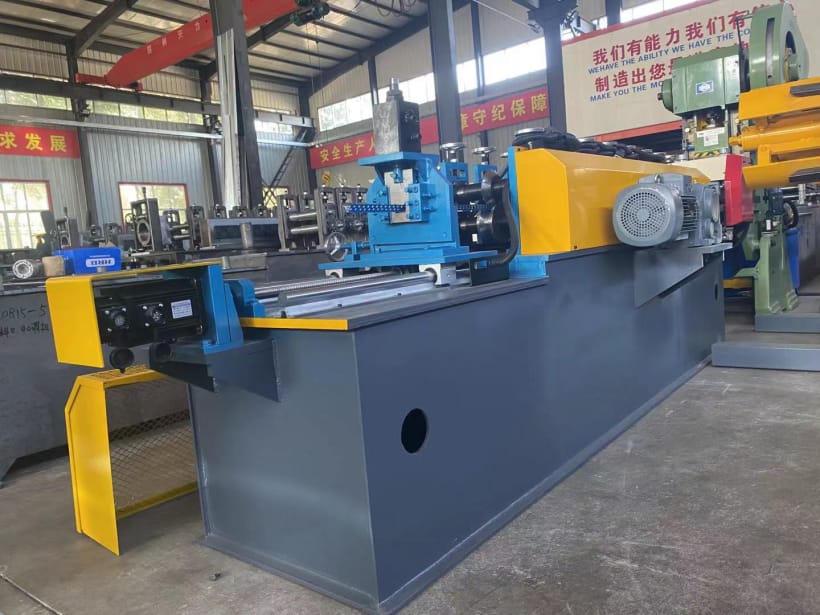Wall angles are crucial components in construction projects, providing structural support and clean, finished edges for walls and ceilings. Traditionally, the production of wall angles involved manual fabrication processes, which were time-consuming and prone to human error. However, with the introduction of wall angle making machines, the manufacturing process has been revolutionized, offering increased efficiency, precision, and cost-effectiveness. In this article, we will explore the benefits of utilizing wall angle making machines and how they contribute to the advancement of construction projects.

Streamlined Production Process:
Wall angle making machines automate the manufacturing process, significantly improving efficiency and reducing production time. These machines are designed to handle various stages of production, including material feeding, roll forming, punching, and cutting. By automating these processes, manufacturers can achieve faster production cycles, save valuable time, and optimize resource utilization.
High Precision and Consistency:
One of the key advantages of using wall angle making machines is the precision and consistency they offer. These machines employ advanced technologies, such as computer numerical control (CNC), to ensure accurate roll forming, punching, and cutting of wall angles. The precise measurements and angles achieved through these machines result in wall angles with consistent dimensions and shapes, eliminating variations and reducing the need for manual adjustments or rework.
Customization and Versatility:
Wall angle making machines offer a wide range of customization options, allowing manufacturers to produce wall angles with different sizes, shapes, hole patterns, and finishes. These machines can be programmed to accommodate specific design requirements, ensuring the production of wall angles tailored to the unique needs of various construction projects. The versatility provided by wall angle making machines enables manufacturers to meet the diverse demands of their customers.
Material Flexibility:
Wall angle making machines can work with various materials, including metals like steel, aluminum, and stainless steel. This flexibility in material compatibility allows manufacturers to cater to different industry requirements and create wall angles suitable for different environments and applications. The ability to work with different materials expands the possibilities for wall angle design and functionality.
Cost-Effectiveness:
Investing in wall angle making machines can lead to significant cost savings in the long run. These machines reduce labor costs by automating the production process and minimizing the need for manual labor. The precision roll forming and cutting achieved by the machines also minimize material wastage, optimizing material utilization and reducing material costs. Additionally, the consistency and accuracy of wall angle production result in fewer defects and rejections, saving both time and resources.
Enhanced Productivity:
Wall angle making machines significantly enhance productivity by increasing production output and reducing production time. These machines operate at high speeds and can produce wall angles in large quantities without compromising quality. The automation of repetitive tasks eliminates human fatigue and increases overall production efficiency. Manufacturers can meet tight deadlines, fulfill large orders, and maintain a competitive edge in the construction industry.
Adaptability to Changing Demands:
With the evolving nature of construction projects and design requirements, the demand for customized wall angles can vary. Wall angle making machines offer the advantage of adaptability to changing market demands. They can be easily reprogrammed or adjusted to accommodate new wall angle designs or production requirements, allowing manufacturers to stay agile and responsive to customer needs.
Conclusion:
Wall angle making machines have revolutionized the production of wall angles, offering increased efficiency, precision, customization options, and cost-effectiveness. These machines streamline production, enhance productivity, and enable manufacturers to meet the evolving demands of construction projects. By investing in wall angle making machines, manufacturers can elevate their production capabilities, deliver high-quality wall angles, and stay competitive in the construction industry.
